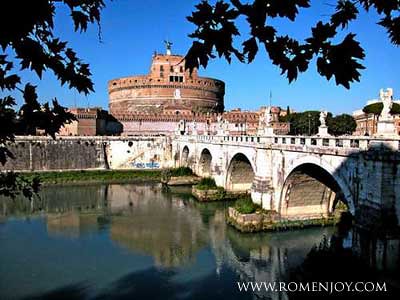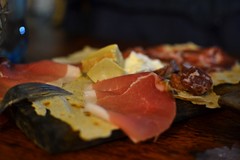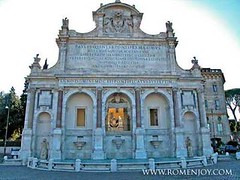How to Design and Layout a Coffee Shop Or Espresso Bar
If you are planning to open an espresso bar/coffee shop, then developing an efficient store design and layout will be one of the most important factors in positioning your business for success.
How to Design and Layout a Coffee Shop Or Espresso Bar
How to Design and Layout a Coffee Shop Or Espresso Bar
How to Design and Layout a Coffee Shop Or Espresso Bar
How to Design and Layout a Coffee Shop Or Espresso Bar
Speed of service is critical to the profitability of a coffee business. An efficient ergonomic store design will allow you to maximize your sales by serving as many customers as possible during peak business periods. Even though your business may be open 12 to 16 hours a day, in reality, 80% of your sales will probably occur during 20% of those hours. Coffee is primarily a morning beverage, I know your busy times of day (those times when you are most likely to have a line of customers waiting), may be from 6:30 am to 8:30 am, and then again around lunchtime. If youhave a poor store layout, that does not provide a logical and efficient flow for customers and employees, then the speed of customer service and product preparation will be impAired.
Think of it like this; if someone pulls open the front door of your store, and they see 5 people are waiting in line to order, there's a good chance they'll come in, wait in line, and make a purchase. But, if they see that 20 people are waiting in line, there is a high probability that they may determine that the wait will be too long, and they will simply get coffee somewhere else. This is money that just escaped your cash register! And, if they come to your store multiple times, and frequently find a long line of waiting customers, they may decide you are not a viable option for> coffee, and will probably never return. Poor design slows down the enTire service process, resulting in a longer line of waiting customers, and lost sales. So in reality, your daily business income will be dependent upon how many customers you can serve during peak business periods, and good store design will be essential to achieving that objective!
The financial impact of a poor store design can be significant. For the sake of this example, let's say the average customer transaction for your coffee business will be $ 3.75. If you have a line of customers waiting between each morning and 07:00 am 8:30 am, this means you have 90 minutes of crunch time, in which you must drive through as many customers as possible. If you can service a customer every 45 seconds, you willserves 120 customers during this 90 minutes. But, if it takes you 1 minute 15 seconds to service each customer, then you will only be able to serve 72 customers. 120 customers x $ 3.75 = $ 450.00 x 30 business days per month = ,500. 72 customers x $ 3.75 = $ 270.00 x 30 business days per month = ,100. This represents a difference of ,400 in sales per month (,800 per year), coming from just 90-minutes of business activity each day!
So how should you go about designing your coffee bar? First, understand that putting together a good design is like assembling a jigsaw puzzle. You have to fit all the pieces in the proper relationship to each other to end up with the desired picture. This may require some trial and error to get things right. I've designed hundreds of coffee bar over the past 15 years, and I can truthfully tell you from experience, it still usually takes me a couple of attempts to produce an optimal design.
The design process begins by determining your desired store Menu and other features. If you plan to do in-store baking, then obviously you'll need to include in your plan an oven, exhaust hood, sheet pan rack, a large prep table, and perhaps a mixer. If you plan to have a private meeting room for large groups, then an extra 200 sq. ft. or more will need to be designed-in, in addition to the square fooTAGe you are already allocating for normal customer seating.
Your intended business and other Menu features should also drive decisions about the size of location you select. How many square feet will be required to fit in allthe necessary equipMent, fixtures, and other features, along with your desired seating capacity?
Typically, just the space required for the front of the house service area, (cash register, brewing espresso equipment, & pastry case, blenders, etc.), back of the house (storage, prep, dishwashing liquids and office areas), and 2-ADA restrooms, will consume about 800 sq. ft. If extensive space for Food prep, baking, coffee roasting, or Cooking will be required, this square fooTAGe may increase to 1.000 to 1.200, or more. What ever is left over after that within your space, will become your seating area.
So, a typical 1.000 sq. ft coffee bar, serving beverages and simple pastries only, will probably allow for the seating of 15 to 20 Kunder-max! Increase that squarefooTAGe to 1.200 sq. FT., and seating should increase to 30, or 35. If you plan to prepare sandwiches, salads, and some other Food items on site, 1.400 to 1.600 sq. ft. should provide enough space to seat 35 to 50, respectively.
Next, you will have to determine the tasks that will be performed by each employee position, so that the equipment and fixtures necessary to accomplish those tasks can be located in the appropriate places.
Normally, your cashier will operate the cash register, brew and serve drip coffee, pastries and desserts and serve. Your barista will make all your espresso-based beverages, tea, chai, hot chocolate, Italian sodas, as well as all the blender beverages. If you'll be preparing sandwiches, Paninis, wraps, salads, snacks and appetizers, orwill be on-site baking, then a person dedicated to Food prep will be necessary. And, if you anticipate high volume, and will be serving in or on ceramics, a bus-person/dishwasher may be a necessity.
After you have determined what you will be serving, the space you will be leasing, and what each employee will be responsible for, you will then be ready to begin your design process. I usually start my design work from the back door of the space and work my way forward. You'll need to design all of the features that will be necessary to satisfy your bureaucracies and facilitate your menu before you make plans for the customer seating area.
Your back door will most likely have to serve as an emergency fire exit, so you'll need a hallway connecting it with your dining room.Locating your 2-ADA restrooms off of this hallway would make good sense. And, because delivery of products will also probably occur through your back door, having access to your back storage area of the house would also be convenient.
In the back of the house, at minimum, you will need to include a water heater, water purification system, dry storage area, back-up refrigerator and freezer storage, ice maker, an office, 3-compartment sink, ware washing rack for washed wares, mop bucket sink, and a hand washing sink. Do any food prep, and the addition of a food prep sink and prep table will be necessary. If doing ice cream making, baking, Cooking, or full coffee roasting, all the equipment necessary for those functions will also need to be added.
After all the featureshave been designed into the back of the house, you will then be ready to start your design work on the front of the house service and beverage preparation area. This area will probably include a pastry case, cash register (s), drip coffee brewer and grinder (s), grinders, espresso machine and a dipper well, possibly a granita machines, blenders, ice bin, holding rinse blender, hand washing sink, sink under counter refrigeration (under espresso machine and blenders), and a microwave oven.
If serving food beyond simple pastries and desserts, you may need to add a sandwich toaster grill, refrigerated sandwich/salad preparation table, soup cooker/warmer, bread toaster, etc. If you plan to serve pre made, ready to serve sandwiches, wraps, and salads, along with a selection ofbottled beverages, an open-front, reach-in refrigerator merchandising should be considered. Serving ice cream or ice cream? If the answer is yes, then an ice cream or ice cream dipping cabinet will be necessary along with an additional dipper well.
Finally, when all the working areas of the bar have been designed, the customer seating area can be laid out. This will, of course, includes your cafe tables and chAirs, couches and comfortable upholstered chAirs, coffee tables, and perhaps a window or stand-up bar with bar stools. Impulse-buy and retail merchandise shelves should be established, and a condiment bar should be located close to where customers will pick up their beverages.
A quick word about large upholstered couches, chAirs, and coffee tables. Living roomtype furniture takes up a lot of space. If you plan to be opening evenings, and will perhaps serves beer and wine, and having comfortable seating will be important for creating a relaxing ambiance, then by all means do it. But if you have limited seating space, and are not trying to encourage people to relax and stay for long periods of time, then stick with cafe tables and chairs. The more people you can seat, the greater your income potential!
Features from the front door to the condiment bar should be arranged in a logical, sequential order. As your customers enter the front door, their travel path should take them past your impulse-buy merchandise displays, and the pastry case, before they arrive at the point of order (where your cashier, cash register, and menu-board will belocated). Exposing customers to your impulse items and pastries, before they order, will greatly increase their sales. Then, after the order and payment has been taken, they should proceed down-line away from the cash register to pick-up their beverage, and finally, the condiment bar should be located beyond that point. Be sure to separate your point of order from the point of product pick-up by at least six feet, .otherwise customers waiting for their beverage may begin to intrude into the space of those ordering.
Don't make the mistakes that many slurps designers commonly make. They arrange these features in a haphazard way, so that customers have to change direction, and cut back through the line of awaiting customers to proceed to their next destination in the servicesequence. Or, wanting to make their espresso machine to focal point to those entering the store, they place it before the cashier along the customer's path of travel. Customers inevitably end up trying to order from the bartender before they are informed that they need to proceed to the cashier first. If this happens dozens of times each day, confusion and slowed beverage production will be the result.
On the employee's side of the counter, work and product flow are even more important. Any unnecessary steps or wasted movements that result from a less than optimal design will slow down employee production. All products should flow in one direction seamlesly towards the ultimate point of pick-up. For example, if preparing a particular item is a 3-step process, then placement ofequipment should allow for the 3 steps to occur in order, one linear direction, with the final step occurring closest to the point where customers will be served.
Equipment should be grouped together so that it is in the immediate proximity of the employee (s) who will be using it. Beyond the actual equipment, empty spaces must be left on the counter top to store ingredients and small wares (tools) used in product preparation. Counter top space will also be needed where menu items will actually be assembled. Think of the grouping of equipment for different Job functions as stations. Try to keep different stations compact and in close proximity to each other working, but make sure that there is enough space between each so that employee working-paths don't cross, which couldcontribute to employee collisions.
Creating defined work stations will allow you to put multiple employees behind the counter when needed. When it is busy, you may need to have 2 cashiers, another person just bagging pastries and coffeebrewing, 2 baristas behind the espresso machine, maybe even a dedicated person working the blenders. If you're preparing sandwiches and salads to order, then another person may need to be added to handle that task. Keeping your stations in close proximity to each other will allow one employee to easily access all equipment during very slow periods of business, thus saving you valuable labor Dollars.
When you arrange equipment in relationship to each other, keep in mind that most people are right handed. Stepping to the right of theespresso machine to access the espresso grinder will feel more comfortable than having to move to the left. Likewise, place your ice storage bin to the right of your blenders, so when you scoop ice, you can hold the cup or blender pitcher in your left hand, and scoop with your right.
As you create your store layout, the equipment you select should fit your space and the needs of your anticipated business volume. A busy location will most likely require a dual or twin, air pot, drip coffee brewer (one that can brew 2 pots at the same time), as opposed to a single brewer. If you anticipate selling a lot of ice and blended drinks, then an under counter ice maker, one that can only produces 100 pounds of ice or less per day, will not be sufficient. Instead You should locate ahigh-capacity ice maker (one that can make 400 or 500 lbs. per day) in the back of the house, and ice to transport an ice holding bin up front. Plan to bring in frozen desserts and ice cream? Then a 1 door reach-in freezer in the back of he house will probably be inadequate for you storage needs, so you'll need to consider a 2 or 3 door. I always recommend a 3 group espresso machine for any location that may generate 150 drinks per day or more. And, I can tell you from experience, you can never have too much dry or refrigerated storage space!
Make sure that any equipment you select will be acceptable with your local bureaucracy before your purchase and take delivery of it. All equipment will typically need to be NSF UL approved &, or have a similar, acceptable, foreigncertification equivalent. Your bureaucracy will most likely want to see manufacturer specification sheets on all equipment to verify this fact, before they'll approve your plans.
ADA (American's with Disabilities Act) compliance will also come into play when you are designing your coffee bar. In some areas of the country, this will only apply to those areas of your store that will be used by customers. However, other bureaucracies may require your enTire store to be ADA compliant. Following are some of the basic requirements of compliance with the code:
• All hallways and isle ways must be 5 feet wide (minimum).
• All countertop working heights must be 34 inches high (instead of normal 36 inch height).
• 18 inches of free wall space must beprovided on the strike side of all doors (the side with the door knob).
• All hand-washing sinks must be ADA friendly.
• All bathrooms must be ADA compliant (5 foot turnaround space for wheelchair, handrails at toilet, acceptable clearance around toilet and hand washing sink, etc.).
• No steps allowed, ramps are OK with the proper slope.
• If your space has multiple levels, then no feature may exist on a level where handicapped access has not been provided, if that same feature does not exist on a level where it will be accessible.
You can find the complete regulations for ADA compliance at the following website:
http://www.access-board.gov/adaag/html/adaag.htm
Beyond the basic Equipment Floor Plan, showing newpartitions, cabinets, equipment, fixtures, and furnishings, you'll need to produce some additional drawings to guide your contractors and satisfy the bureaucracies.
Electrical Plan
An electrical plan will be necessary to show the location of all outlets needed to operate equipment. Information such as voltage, amperage, phase, hertz, special instructions (like, "requires a dedicated circuit"), and the horizontal and vertical location of each outlet, should all be specified.
A small, basic coffee shop might get away with a 200 amp service, but typically 400 amps will be required if your equipment package will includes items like an electric water heater, dishwasher, high temperatures or Cooking equipment (ovens, panini grill, etc.).
Inaddition to the electrical work required for your coffee business-specific equipment, you may need to adjust existing electrical for additional or reconfigured lighting, HVAC, general-purpose convenience outlets, and exterior signs. Also, have your electrician run any needed Speaker wires, cables, TV/internet and cash register remote receipt printer cables at the same time they are installing electrical wires. Finally, make sure your electrician makes provisions for lighted exit signs, and a battery-powered emergency evacuation lighting system, if needed.
Plumbing Plan
A plan showing all plumbing features will be necessary. At minimum, this should show all locations for all needed in water sources (hot & cold), drains, your water heater, waterpurifications system, grease interceptor (if required), bathroom fixtures, etc.
While a typical P-trap drain should be acceptable for most fixtures and equipment, some will require an air-gap drain. An air gap drain does not go through the "S"-shaped twists of the P-trap. Instead, the drain line comes straight down from the piece of equipment or fixtures, and terminates 2 inches above the rim of a porcelain floor sink drain. This porcelain drain basin is usually installed directly into the floor. The air gap between the drain line from your equipment or fixtures, and the bottom of the basin, prevents any bacteria in the sewer pipe from migrating into the equipment or fixtures. I drain the following pieces of equipment to a floor sink drain when creating a plumbingplan:
• espresso machine
• dipper wells
• ice maker
• ice holding bin
• food prep sink
• soft drink dispensing equipment
To save on the life of your water filtration system, only your espresso machine and coffee brewer should be supplied by with treated water. Coffee is 98% to 99% water, so good water quality is essential. Your ice maker should only require a simple particle Filter on the incoming line (unless your water quality is terrible). There is no need to Filter water that will be used for hand and dish washing, cleaning mops, flushing toilets, and washing floors!
Be aware that many bureaucracies are now requiring a grease interceptor on the drain line from your 3-compartment ware washingsinks and automatic dishwasher. To grease interceptor is basically a box containing baffles that traps the grease before it can enter the public sewer system.
Also understand that a typical retail space will not come equipped with a water heater with enough capacity to handle your needs. Unless your space was previously some type of a food service operation, you will probably need to replace it with a larger one.
If cutting trenches into the floor will be necessary to install porcelain floor sinks, grease interceptor, and run drain lines, then establishing a few general purpose floor drains at this same time behind the counter, and in the back of the house, will prove useful. Floor drains will allow you to squeegee liquids away when spills occur, and when washingfloors.
Finally, if you added some new walls during your remodel, you may need to have the fire sprinkler system for your space adjusted or reconfigured.
Cabinet Elevations
Drawing cabinet elevations (the view you would have if you were standing in front of your cabinets), will be necessary for your cabinet maker to understand all the features they will need to incorporate into your cabinet designs.
These elevations are not meant to be shop fabrication drawings for your cabinetmaker, but merely serves to reference, showing needed features and desired configuration. Where do you want drawers, and under counter storage space; and, where do you want the cabinet doors on that under counter storage? Where should open space be left for the placement of undercounter refrigeration and trashcans? Cup dispensers Will be installed in the cabinet face under the counter top? These elevations will provide your cabinetmaker with a clear understanding of all these features.
While your kitchen base cabinets at home are typically 24 inches deep, for commercial applications they should be 30 inches deep, and 33 inches under counter refrigerator if an is to be inserted. Also, when specifying the size of an open bay to accommodate under counter refrigeration, be sure to allow a couple of inches more than the physical dimensions of the equipment, so that it can be easily inserted and removed for daily cleaning.
Dimensions Plan
How to Design and Layout a Coffee Shop Or Espresso Bar











